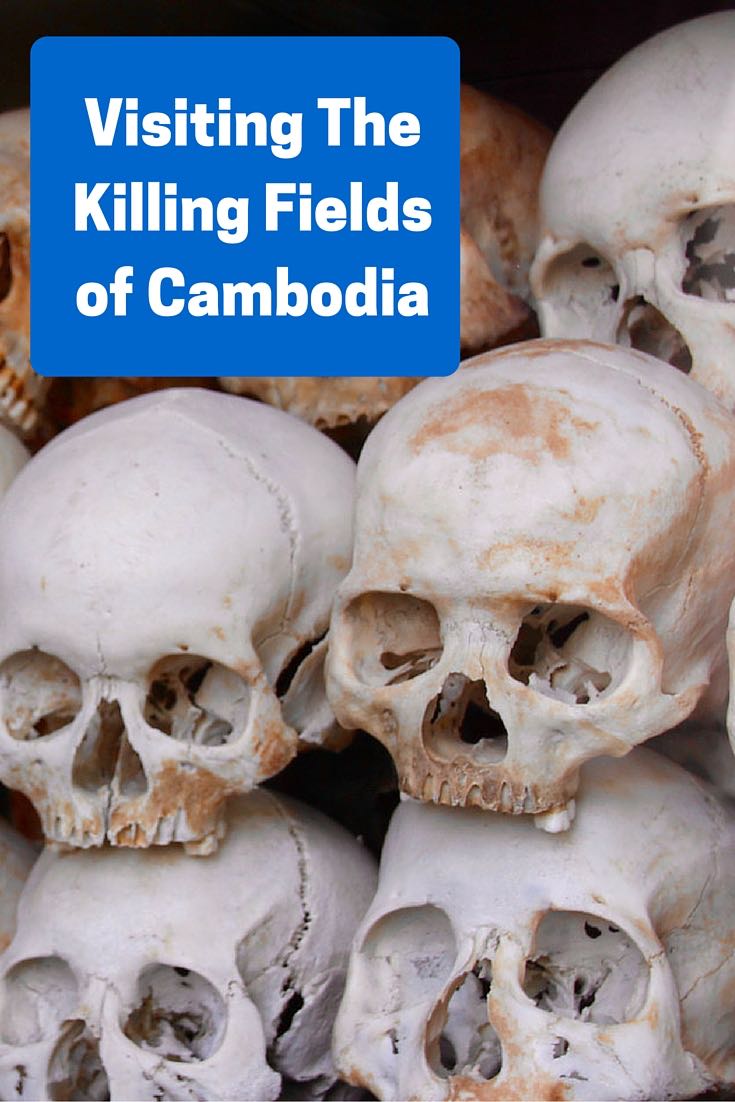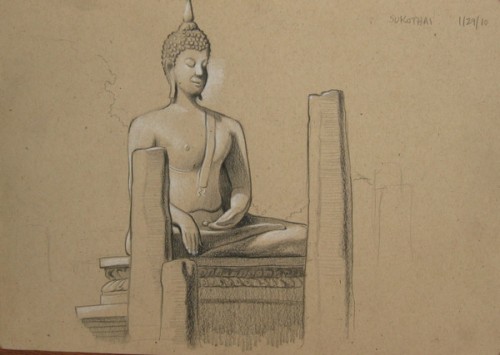Phnom Penh Killing Fields Tour – Seeing the Darkest Part of Cambodian History
categories: asia travelAs part of the recent Amateur Traveler trip to Cambodia we visited the Choeung Ek Killing Fields Memorial and the Genocide Museum to learn more about the horrific time of the Khmer Rouge in Cambodia. This is a dark part of the history of Cambodia but you can’t really understand the scars that people in this country still carry without understanding this part of their history.
In 1975 The (Chinese backed) communist Khmer Rouge soldiers marched into the capital of Phnom Penh and gained control of the country. Even civilians who may have welcomed the demise of a corrupt government were quickly given reason to regret the Khmer Rouge victory. The very day of their triumph soldiers told everyone in the cities of Cambodia that they needed to leave their homes and move to the countryside. Their excuse was that they were looking for CIA or KGB spies or that the Americans were going to bomb the city. Within 3 days Phnom Penh was a ghost town.
This was the beginning of a 4-year nightmare of Khmer rule. They wanted to turn the country back into a purer agrarian economy where there was no difference between the rich and the poor. The assumed anyone who was an intellectual was an enemy. Even just wearing eyeglasses could get you killed.
The Killing Fields
The Choeung Ek Killing Fields Memorial outside of Phnom Penh is only one of 300 different execution and mass grave sites in the country, but this one has been turned into a memorial to the victims and a museum to explain what happened. Victims here were usually delivered by truck from the nearby S21 prison in long strings of manacled prisoners. They were made to dig their own shallow grave and then often were killed by having their heads bashed in with farm tools. At this site as many as 300 people a day would be killed in this fashion.
- Get a universal plug adapter
- Search for Great Tours HERE
- Get a Car Rental
- Buy Travel Insurance
- Book Your Accommodation HERE
- Get an eSim to be able to use your smartphone abroad.

One mass grave was filled with the bodies of children, babies and women (mostly naked) as the Khmer Rouge killed entire families so that no one would be left to avenge the murder.
Another grave was filled with the skeletons of Khmer Rouge soldiers who had defected to the Vietnamese in Cambodia’s war with Vietnam. Cambodia claimed all of South Vietnam as part of traditional Cambodia. These soldiers were said to have a “Vietnamese head on a Cambodian body” so they were beheaded.
Many of the mass graves in the area have been excavated and the bones have been interned in a large glass-walled stupa that displays piles of skulls and other bones. Each skull has a color-coded dot that indicates the method of execution.
A small two-room museum and a short video expand on the history of the site and of the Khmer Rouge. We learn that its top leaders were intellectuals and even teachers. It is long on what and when, but how can you explain how someone who was a teacher could make being a teacher a crime punishable by death? How can you explain how soldiers could kill babies by bashing them against a tree?
S21 / Tuol Sleng Genocide Museum
We also visited the nearby Genocide museum which is housed in the old S21 prison. This converted high school became a place where prisoners were tortured for information before being killed. The museum is filled with photographs of the victims staring out at you through haunted eyes. There are also paintings of various ways that prisoners were tortured that were painted by 2 of the 7 adult survivors. One of the survivors was present that day, signing his book. He is alive today just because he was able to fix a broken typewriter so he was kept around like the other 6 survivors to perform administrative tasks. A large mural also shows Vietnamese soldiers with the 4 children who they found alive when Vietnamese soldiers liberated the prison.
There was a point during the visit that it just all became too much. It is hard to understand the kind of hate that you need to so dehumanize other people that you can treat them like the prisoners were treated.
Other Stories
My misunderstanding with the story of the Khmer Rouge was to think that after we had seen the memorials and the museums that we were done with the story, but when a country loses a fourth of its population to executions, starvation and civil war, everyone lost someone. Everyone has a story. Our tour guide lost his father to the Khmer Rouge. The guide we had in the royal palace told us of the 22 members of the royal family that were buried alive and of his own uncle who was killed for being a teacher.
I also misunderstood that when they talk about the time of the Khmer Rouge they talk of the 4 years that they were in power, but the suffering of the county continued for decades after the Vietnamese invaded in the time of the civil war. Cambodia is a country still haunted by its past. You can’t make being a teacher or an intellectual a crime and then expect to recover in a single generation.
This was part of a larger tour done with listeners of the Amateur Traveler by Intrepid Travel, on their “Cambodian Traveller” tour.
+Chris Christensen | @chris2x | facebook
One Response to “Phnom Penh Killing Fields Tour – Seeing the Darkest Part of Cambodian History”
Leave a Reply
Tags: article, cambodia, intrepid travel









 Phnom Penh Cyclo Tour – Cambodia – Amateur Traveler Video #82
Phnom Penh Cyclo Tour – Cambodia – Amateur Traveler Video #82 Places to Visit in Cambodia
Places to Visit in Cambodia An Artist in Cambodia – Cambodia through the Eyes of a Painter
An Artist in Cambodia – Cambodia through the Eyes of a Painter Travel to Cambodia – Episode 343
Travel to Cambodia – Episode 343

lee laurino
Says:April 21st, 2016 at 2:03 pm
Often viewing the horrors that the world has seen is more life changing that any trip even a full time traveler takes………sometimes wonderful things stay with us and sometimes not